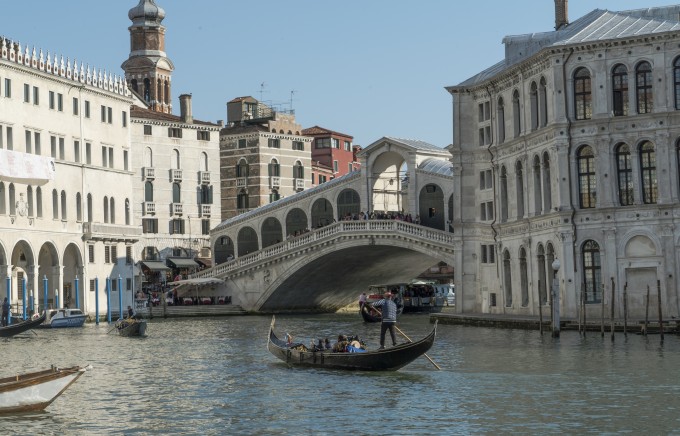
Dir: David Bickerstaff | 82′ | UK | Documentary
Exhibition on Screen offers us an unparalleled big screen entree into Her Royal Highness The Queen’s collection of paintings by the Venetian 17th Century artist Giovanni Antonio Canal (Canaletto), which is spread between the Royal palaces, offering unique insight into treasures captured here by David Bickerstaff’s agile camera in glowing colours and pristine detail.
Canaletto & the Art of Venice also takes us to the heart of Venice to explore the origins of the artist’s work and features behind-the-scenes footage of The Queen’s Gallery exhibition and interviews with curators and art experts. Instead of a simple trawl through Canaletto’s output, the film offers insight into the artist’s central role in 18th century Venetian ‘vedute’ or landscape painting. Art Historian Charles Beddington gives a fascinating lesson in art history – avoiding worthiness with a twist of dead pan humour – and showing Canaletto’s particular penchant for painting dogs, so even the most disinclined viewer gets to understand how this genre developed in the early 18th century. Lucy Whittaker, a senior curator, offers her two-penny worth along with Rosemary Sweet, Curator of Urban History at Leicester University, and Rosie Rozzall, Curator of prints and drawings at the Palace.
We learn that Canaletto (1697-1768) was born into a middle class family in one of the city’s small squares where he grew up sketching the surrounding rooftops. The turning point of his life came when he travelled to Rome with his father, Bernardo Canal, a theatrical designer, and this saw the start of his work as a stage designer. Venetian painters were masters of colour and Canaletto was no different, soon striking out on his own as a view painter. But it was the English travellers, not the Italians, who admired his work and bought it home as a souvenir of the lagoon, a major stop on the Grand Tour.
Canaletto was also skilled in Capriccio painting – a sort of magic realism of the art world – where paintings were embellished with architectural fantasy, placing archaeological ruins and fictional elements into their compositions, from the Rialto Bridge to the Piazza San Marco, and the Palazzo Ducale to the Church of Santi Giovanni e Paolo. His craftsmanship was meticulous and attentive and he often offered character studies focusing on Venice itself, always refusing to repeat himself. When Canaletto went to London between 1748 and 1755, Venice lost its main ‘vedute’ painter.
The Venetian artist’s financial acumen and keen business sense saw rise to a way of making more money from the existing works when, in the 18th Century, print-making came into vogue. Caneletto’s work could be attractively reproduced for those who could not afford his paintings. With his keen financial flair, he set up the Pasquale Press with English businessman Joseph Smith, so his works could be made into prints and delivered to London clients, for additional fees. Smith sold much of his collection to King George III and now Buckingham Palace houses the largest collection of Canaletto’s work, which was far more popular among English patrons that the Italians.
The remarkable group of over 200 paintings, drawings and prints on display offers unique insight into the artistry of Canaletto and his contemporaries, and the city he became a master at capturing. Bickerstaff also offers a sneak view of the interiors of Buckingham Palace and Windsor Castle. CANALETTO is well-crafted and watchable for art lovers and travellers alike. MT